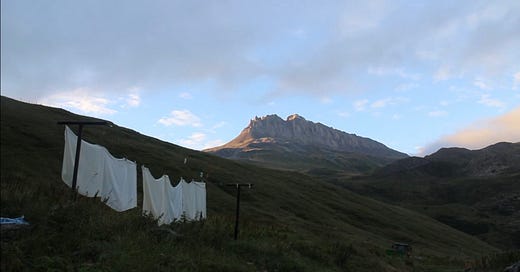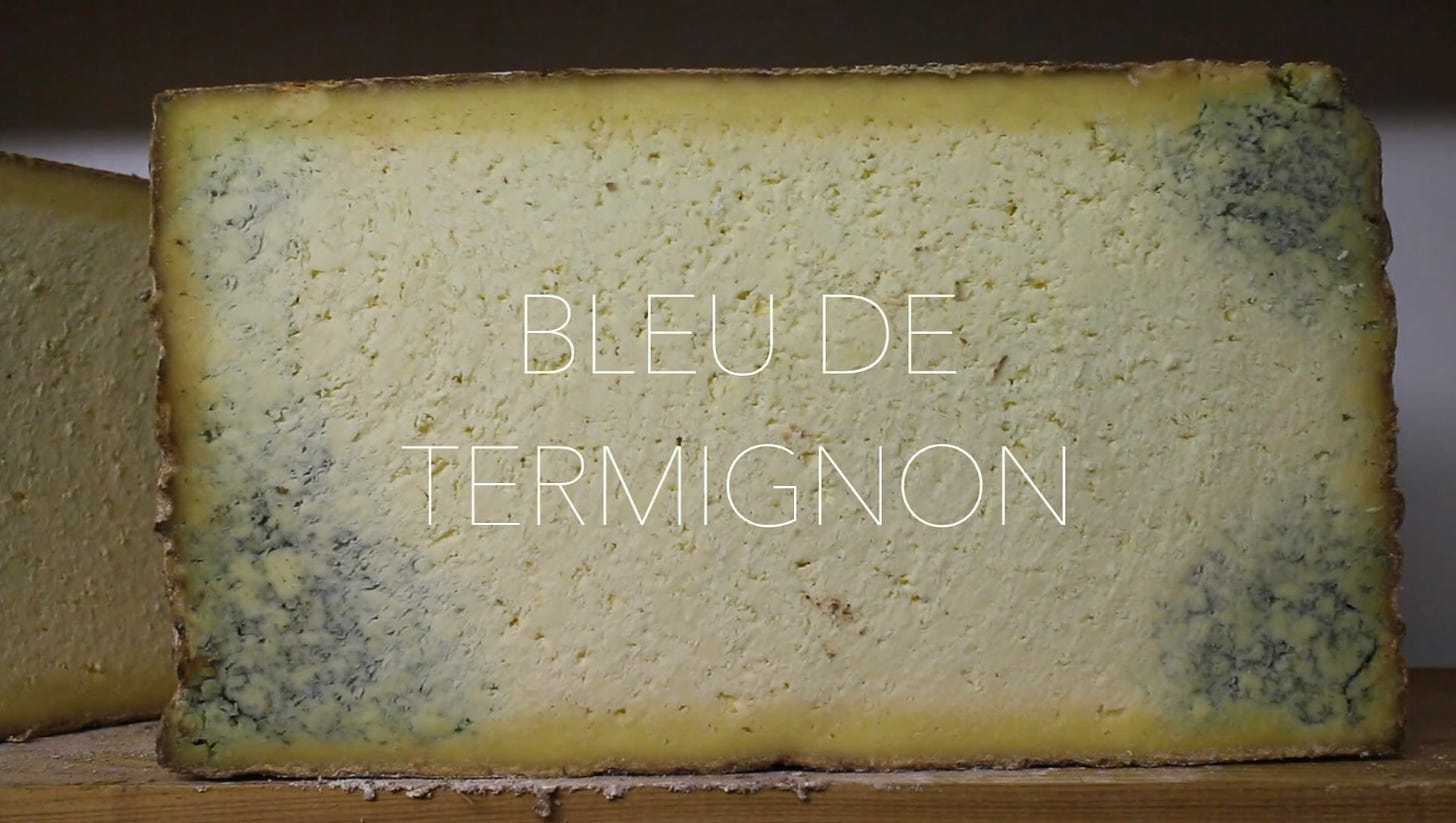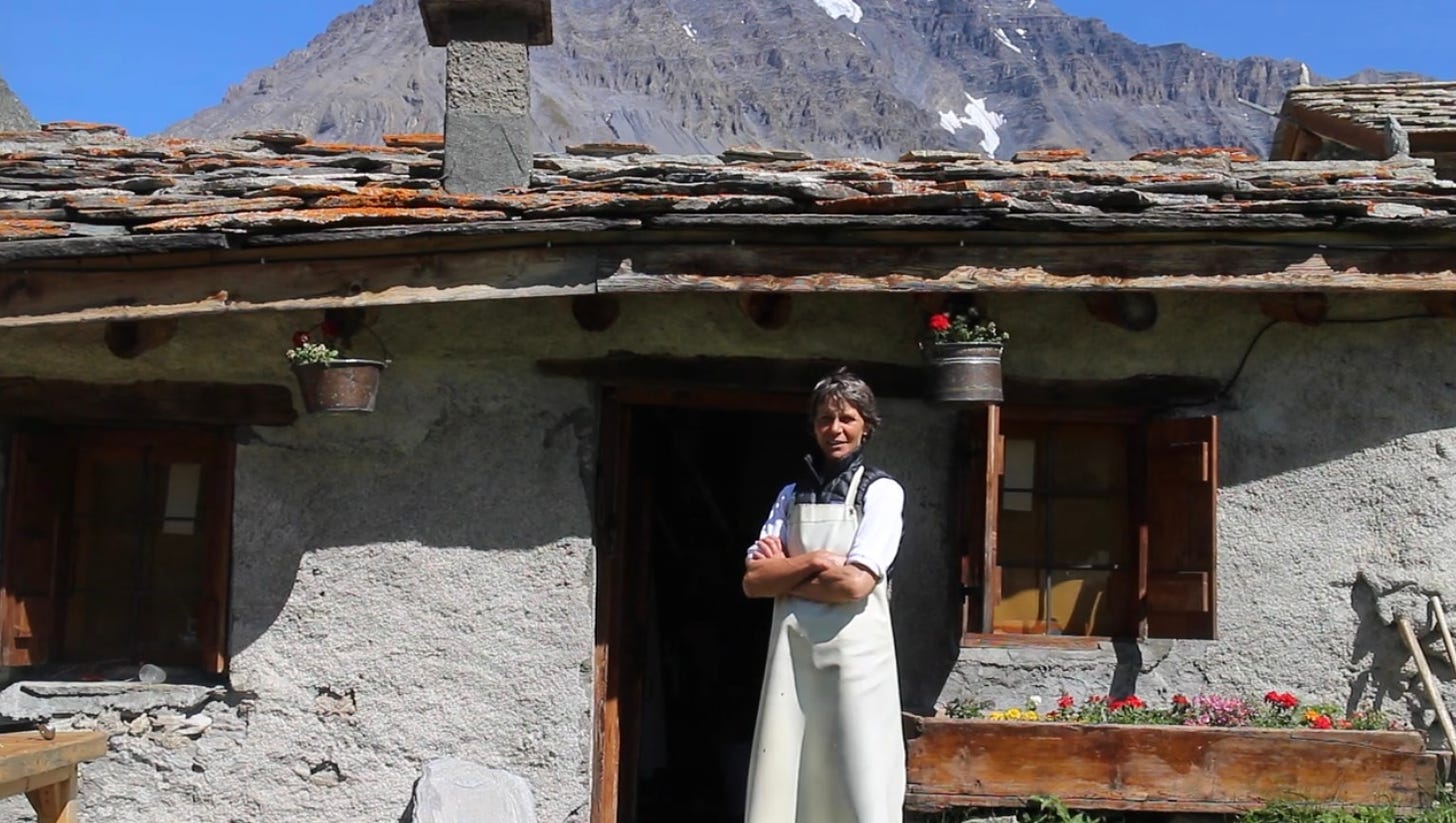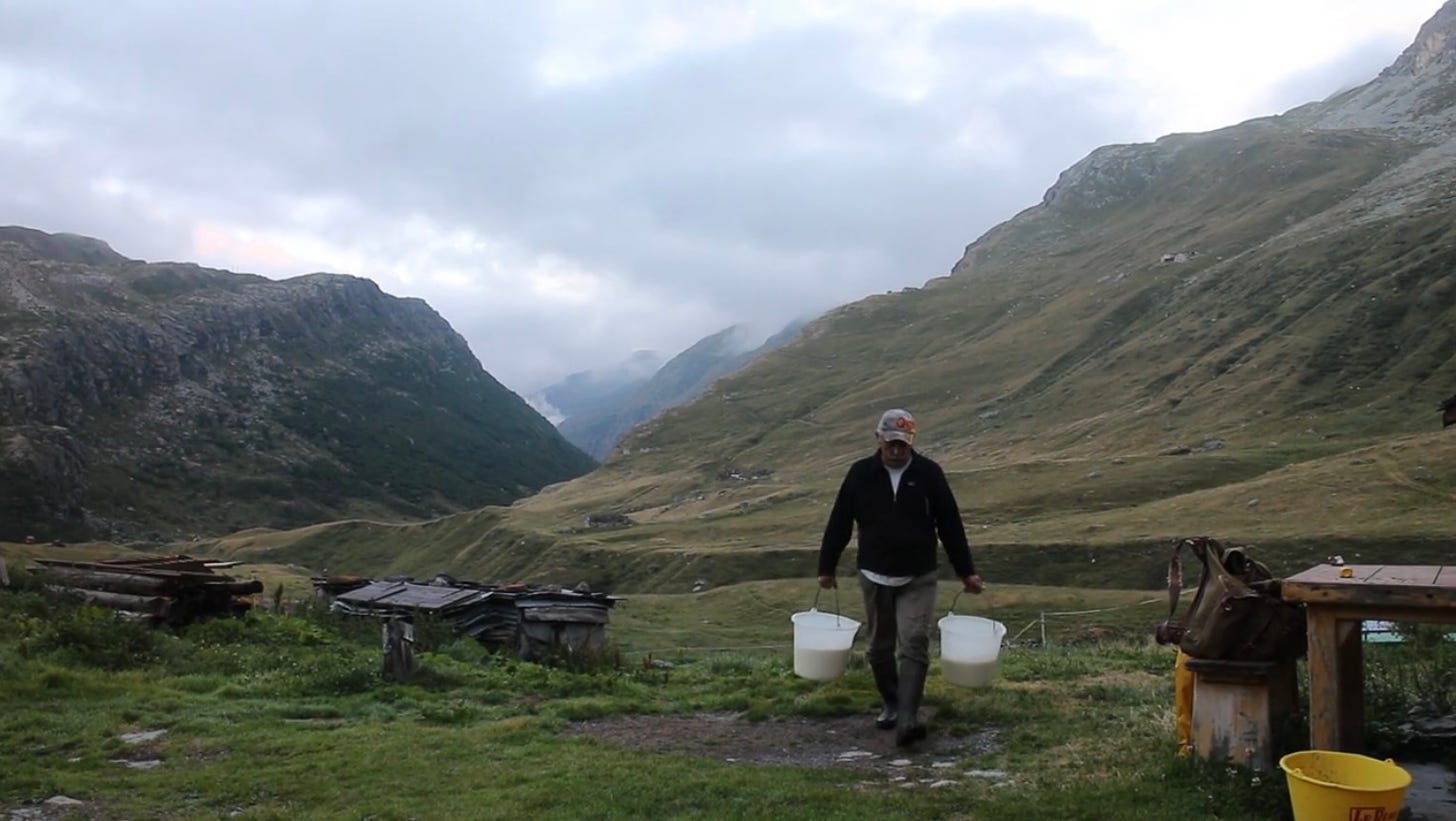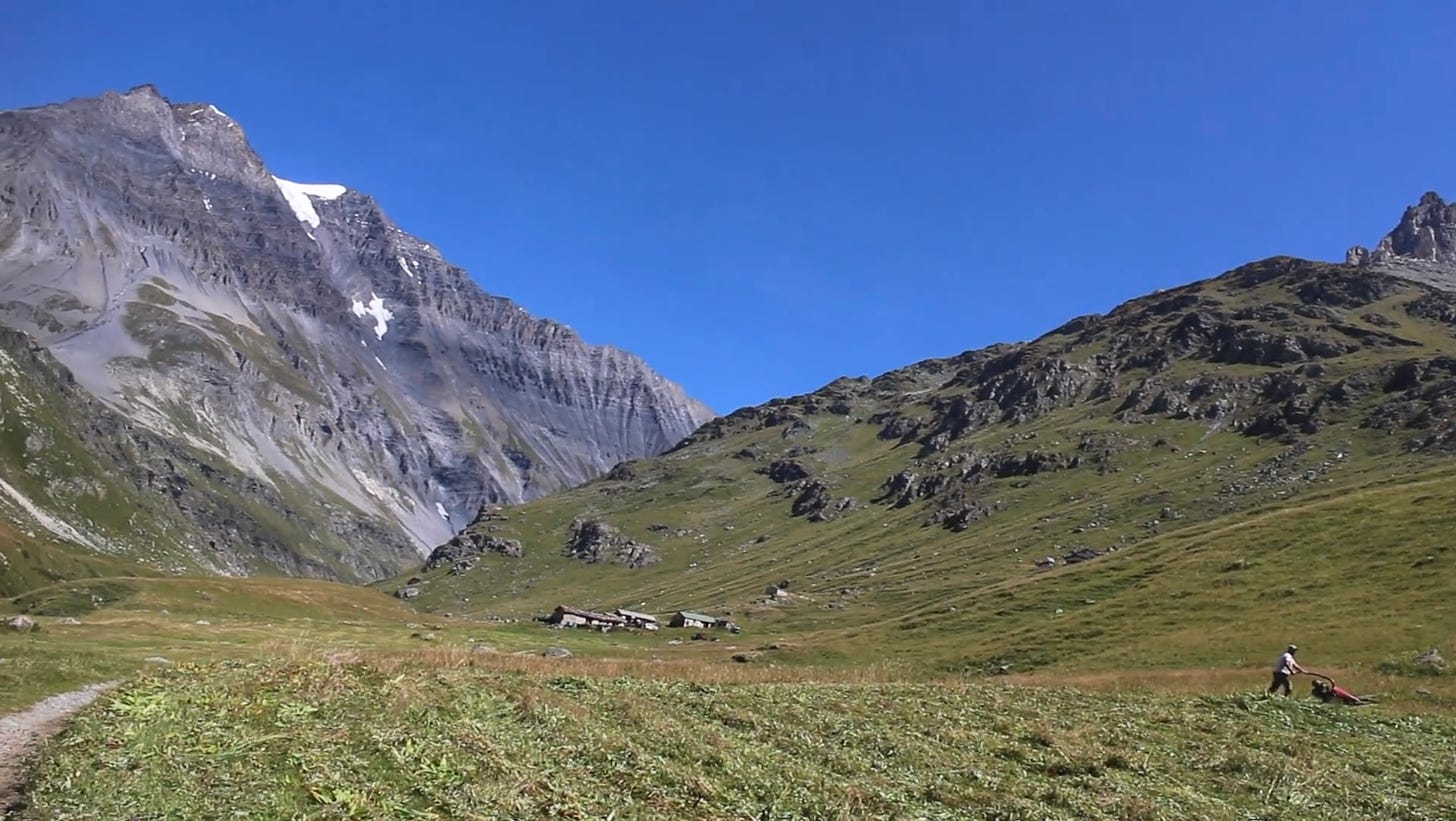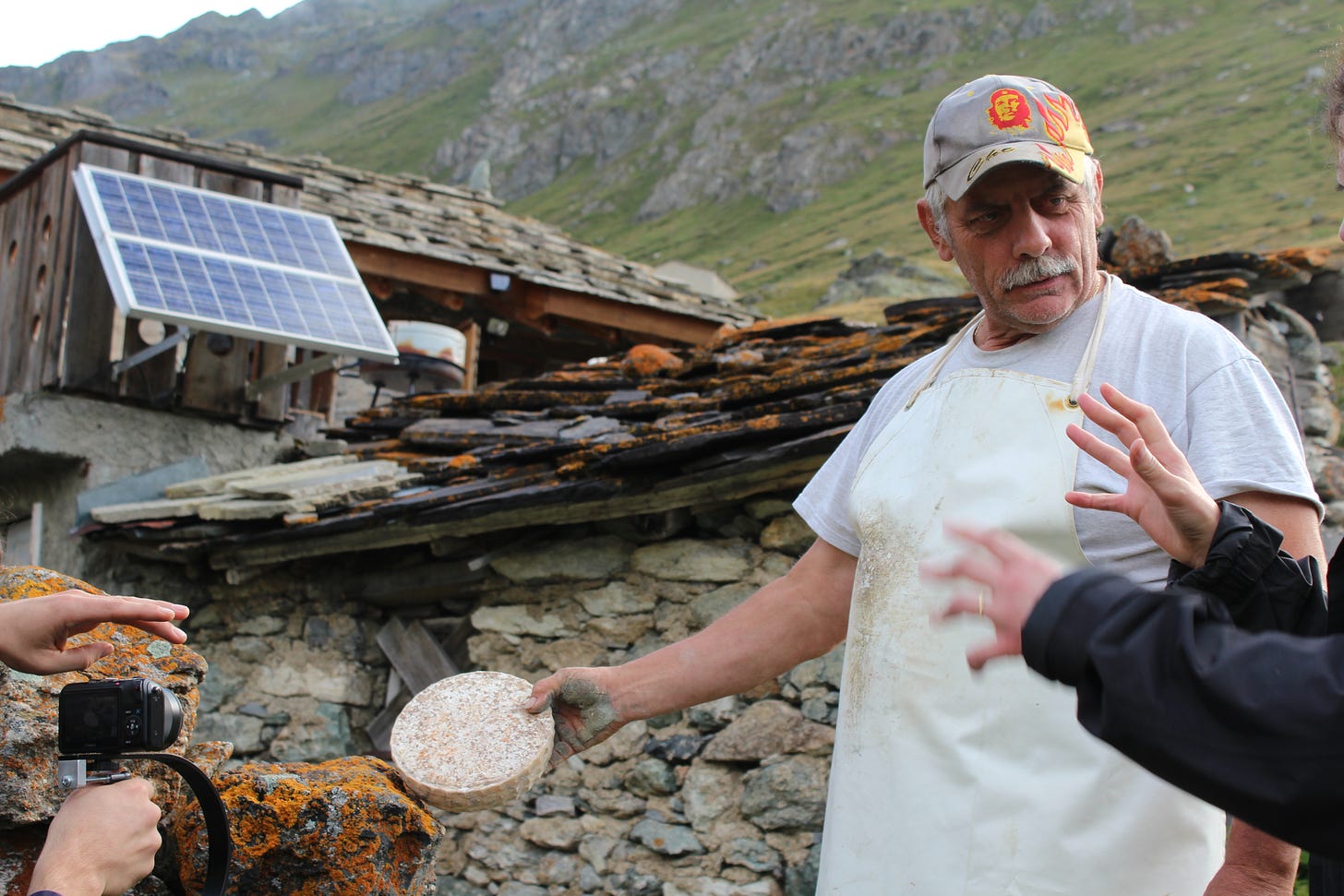BLEU DE TERMIGNON part 1 // Haute Maurienne // Parc de la Vanoise // FRANCE
A story-led look at one of the seminal foods that highlights our broken connection to artisanal food that initiated the Up There The Last project.
I have just come back from a town called Bra, host to Slow Food Cheese festival in Italy. A worldwide gathering of fascinating cheesemakers, maturers, journalists, students, traders and general cheese crazies. The cream of the crop in the world cheese game, who come together every two years.
Yet standing in the fizzing market throng of thousands of punters looking for their piece of rare cheese from stalls that line most streets of the town, I could just about see the pre-alpine mountains to the north, hazy and distant. I could not help but think of the herders and makers that I knew were up there, who would never be able to attend the festival for one main reason;
“But Max, if I am there in Bra, who is here to make cheese on the mountain?”
It all made me think of the piece I have written below. It is a deep-read that goes some way to explaining an interesting response to disconnection, and I feel it is a bit of a manifesto too. I hope you enjoy it. Go and make a cup of tea!
Not all coming posts for the archive will be this long, as this particular piece is a story-led foundation upon which the backbone of the project is built.
Paid subscribers will see the film featured in the piece, which contains detailed method. It was made for my cheese family at Mons Cheesemongers.
Life Feeds on Life: Only the Stones Know
Max Jones
It all changed for me a decade ago, in one particular moment that sparked my fierce desire to respond to our disconnection from food, when I had been living the friendly cliché of the Londoner-artist paying his way working the many food stalls of Borough Market. At the time I was beguiled by the liveliness of the place, with traders hoisting hams and fish crates in the mornings and the busy lunch rush would be so dementedly cluttered, I remember seeing a man accidentally landing the long end of a bratwurst into somebody else's mouth, squeezing through the throng. I had been working with raw milk cheese, something I had always loved. It reminded me of my Italian family and how as long as you had a piece of Toma in your backpack, you would never go hungry on your hike into the mountains, something fundamental behind my subsequent research to date, and it provided a safe antidote to life in the metropolis by way of connecting me to the alpine herds I had walked amongst as a child.
One very busy Saturday in Spring, as I frantically served a busy queue of customers in the stall, I was approached by someone with a charged face who had been scanning the counter from a non-committal distance.
“You chancer! How dare you charge that much for cheese. I know what cheese costs, I can get a piece six-times the size of that for the same price at Tesco down the road!”
This came at a very particular time. In the weeks leading up to this, I had been struggling with the fact that many customers would ask me questions that I did not truly know how to answer, normally all posed with a combination of interest, confrontation, superiority, diffidence and smarm- “Is this grass fed?', “is that organic?”, “are those non-GM?”, “are the cows fed silage?”, “is it pasteurised?”, “does it contain gluten?”
I had gleaned from my inspiring boss Jon the de-facto answers to some of the more complex questions, but had been gradually building up a personal insecurity behind the responses I was regurgitating, as although I had visited small-scale farmhouse producers in the past, I had not lived those experiences for long enough to speak with any real confidence about their practice.
The cheese the aggrieved customer had picked out was special to me though. I had been to where it was made and fallen in love with the extreme altitude, the cheesecloths drying on a clothesline in the sunny meadow, the lichen-covered chalet in the shadow of a glacier, the tiny herd of 14 cows, the traditional make, the alpine flowers, the ancient wooden forms that inoculate the curds with a hyper-specific set of microbes indigenous to the mountain, the smell of fresh milk and healthy cowshit, the clockwork structure to the day and night, the crystal air, the dependence on the animals, the perspective, and Catherine, the 50-odd year old cheesemaker, who has never been on holiday because she leads a “very full life”. And the cheese itself, Bleu de Termignon, who's remarkable flavour develops through its life as it matures, unlike any other; from fresh fennel and bright aniseed when it is young, to buttery porcini mushroom from the natural blueing that works its way through the loosely milled curds, each one representing a turn on Catherine's hand-powered sausage-come-curd mincer, right through to its final, highly-savoury profile of anchovy and maillard-roast beef fat flavours at around 8 months old.
When you know, when you really understand something's provenance, you want to go into explaining its creation in great detail and share this knowledge which undeniably multiplies its value on eating. The customer left the stall before I could even think about how to defend the cheese, or explain myself, and it really got me thinking.
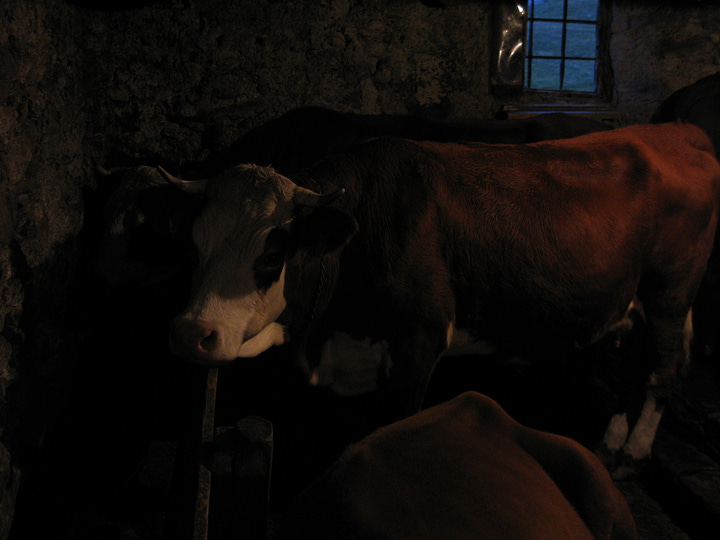
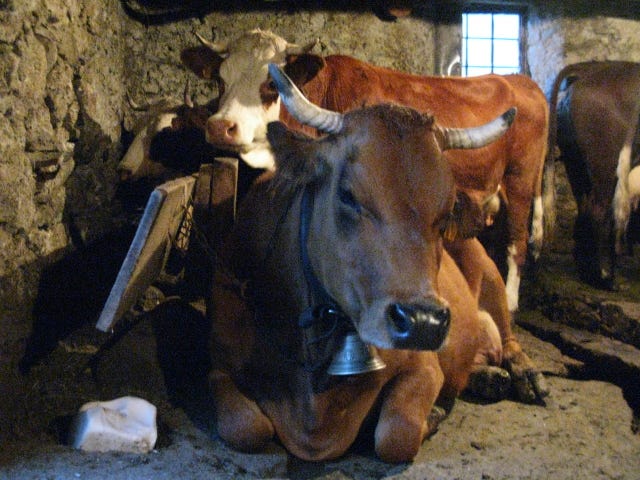
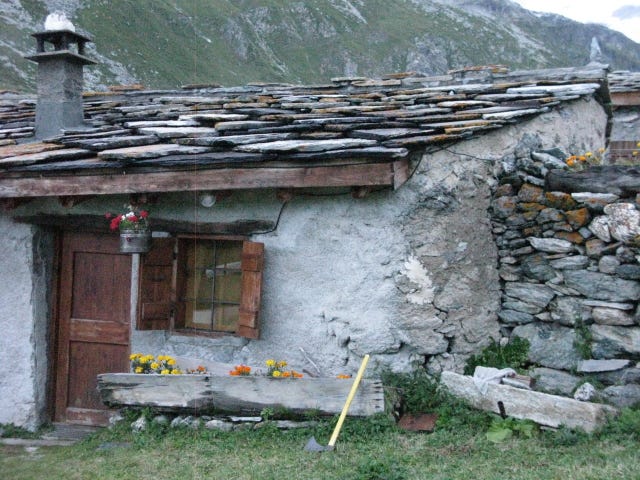
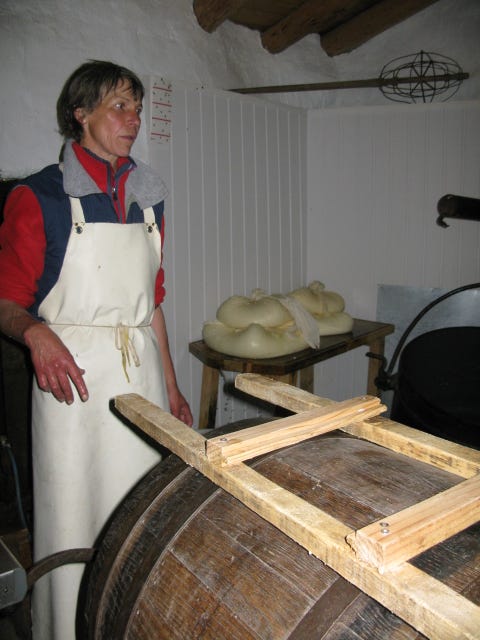
For this reason, that summer I decided to film the making of Catherine Richard's cheese. The long drive into the alps, the refuge at the top of the mountain, the descent on foot into the peak-valleys beyond, rising islands through dense morning fog of the highly humid region, climbing further into the mountain to Catherine's chalet by the iron-grey glacier, shrouded in cloud. The way Catherine sings to her cows, the wooden shaping forms imbued with the natural blue mould that eventually works its way into the cheese, the technique of fermenting curds for a day in acidic whey to then blend with the fresh curds, and the grass which is hand cut and dried into hay, to feed the animals through the winter.
Miraculously, only a few months later back at Borough market, and I really couldn't believe it, that same person hovered by the stall with that tentative strafing of the counter, hands in pockets. I called her in and gave her my phone with the video loaded on the screen. “Hey! You! It's only 8 minutes, I made this for you! Please watch it while I serve these other customers, thanks”
After eight minutes, she handed it back and walked away in silent indifference, only to return a while later with a face contorted in suspicion and defeat, like a sort of terrier sniffing at a can of paint as she said with bothered reluctance, “Well go on then. Well done. You've had me. I want it. Give me a fiver's worth”. I perched my blade in readiness onto the plump cheese, smattered with that same orange lichen that grows on the stones of Catherine's chalet and the surrounding rocks.
“No more than a fiver, I know your game”
I stabilised the piece with my other hand, feeling its humid, velveteen rind, like the damp walls of the maturing cave up there, two kilometres high.
“... I don't think I want to give you any of this cheese”
“Excuse me? I'll have as much of it as I want! Give me fifty quid's worth!”
I felt my face slowly curl into that strange simultaneous smile and frown, where you don't really know what's happening, but can feel your gut instinct take over as you make a sort of humming sound and kink you head to the side.
“Sorry”
She pulled out her bank card.
“You give me that whole bloody wheel of cheese! I want it and I'll have it!”
This anecdote is quite complicated for many reasons. But what I want to focus on is how the discord is symptomatic of our profound, general disconnection from food. This palpable dread from being separated by one's hard-earned money, is in paradoxical conflict with the desire to acquire the product in question, which I think comes from a subconscious, ancient understanding that is the connection to what is authentic and true. There is a connection there. You are touching on a realm of the innately familiar, yet completely ill-equipped to navigate it with lived wisdom and experience.
Entering into a situation with this approach will always propagate failure, as any “food” you buy (for it is all just that, food) will cost more than a supermarket equivalent, and therefore each morsel is steeped in resentment at how expensive the tiny piece you bought was, meaning even that can't be enjoyed. A complete waste of energy on all fronts, and nobody wins.
The following summer I decided to go back to Catherine and show her this little video I was so proud of. I felt I needed to do that. I felt I had captured the essence of what I loved, without a good lens or a decent camera, and was somehow bridging a gap between worlds. I had made it with a handheld DV recorder, but this took nothing away from the raw content of the extraordinary recipe and life behind it. If anything, it made it more realistic, more approachable. I drove to the alps and hiked into the mountain, only this time with my heavy laptop in tow. I arrived unannounced, and there she was, in the sweet, lactic smelling make room, stirring the curds in her giant copper cauldron, which she then covered with a crinkly golden-silver emergency mountain-rescue blanket, to keep them toasty warm.
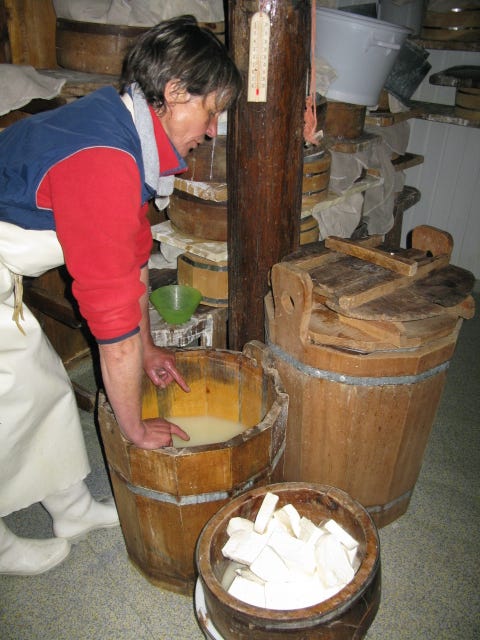
I helped her wash out the milk churns and we went into the tiny living quarters of the chalet for lunch. Her partner, Jean-Jacques, held a mighty cured ham against his oxen chest, holding the shin end with his fist, sawing off chunks with his old no.10 opinel. I flipped my computer open and sat between them, chewing away at the thick slice of salty ham, and started the video. After one minute of film, confused Catherine turns to me with concern, and in her hushed Savoyard accent, dropped on me one of life's great clangers that will stay with me forever.
“But Max, I don't understand. Why are you showing me this? This is what I do every day”
Rising from the table she walked to the bed and lay to nap, stealing the few precious moments I was about to waste with my film to recharge before cheesemaking.
Jean-Jacques also rose, and with a burp lay down on his sofabed, flicking on the tiny tv, its coat-hanger arial finding just enough signal in the mountain to make out a football match through the static.
I remember feeling dismayed and sheepish. Making this huge journey up a mountain to watch on a laptop screen the very life I had arrived in. And that was my goal! I had come for all the wrong reasons, gripped in my self righteous, middle-class London energy that really had absolutely nothing to do with the mountain.
This is precisely the disconnect I am talking about. What I had learned is that the food being made was part of a tradition that in this particular case is as old as the 400 year old chalet the cheese is made in. Where at the first site of dandelions breaking through the melting snow in the valley would indicate to its dwellers that above in the mountain there is great, free pasture to be had for a very limited time of the year. With the pastoral tradition of transhumance they would travel with their Tarine and Abondance herd, sometimes completely nomadically, up into where the wildest herbs and grasses grow like billy-o, where one flower is more beautiful than the next, all competing like mad for the attention of bees and butterflies to propagate them before the encroaching fingers of winter tighten their steely grip on the mountain, and the herd must be moved away from this danger, back down to the more temperate climes of the valley. The amount of cheese made is limited by the quantity of wild pasture consumed, which is in turn limited by the number of cows that one person can individually milk, and no more. Aaaaah, finally! Refreshing, true sustainability one might say.
The last of the milk is used to make smaller Tomme cheeses, and left by the descending herd and herders to mature over winter in the cave as the snow then falls on the mountain, completely burying the chalet in metres of impenetrable drift. This ensures there is food for when they arrive back up there the following spring, having developed on the rind a smattering of the same rust-red lichen, the “fleur rouge” that covers the surrounding rocks and rooftop of the chalet, which according to Jean-Jacques indicates successful maturation. Wherever I find myself in the winter, I often think of these cheeses tucked up together, maturing away up there far from everything, in the cosy monochrome silence that only the stones know.
I didn't much care anymore about learning in order to convince people to buy the cheese. I decided then that these ways of life that are so intricately entwined with an ancestral understanding of how to feed oneself in a given natural landscape, that the preservation of this vital, life-sustaining knowledge was what is most important to learn and conserve. To use the subsequent 'products' as an example of how humans can engage with nature in a symbiotic way, taking advantage of a seasonal glut in the wild, to take its bounty and employ ingenious indigenous methods that are old as time, like cooling fresh mountain butter by leaving it submerged in icy glacial spring-water to keep it close to a fermentation-arresting chill in the height of summer. And not only that, but protect these bastions of the old ways, the makers who are at once biologists, technicians and craftspeople by the very nature of what they do, alerting us to alterations in climate change and the detrimental effects of industry and pollution by noticing changes that have come from a hyper-local knowledge that spans the generations.
I have been on the transhumance in northern Italy many times, because it offers such an elementally powerful connection. I find there is a safety there, where your existence is submissive to something bigger than you. The cacophonous clangour of cow-bells bounces off the houses in tight cobbled streets as the herd moves through the town in the dark hours of the morning, awakening its inhabitants leaning over their balconies in dressing gowns, smiling down above the herd as the heady animal smell of beast and cereal-sweet urine rises up, mixing with their morning coffee. Bakers step out and place a knowing hand on the cows as they pass, offering the first morning loaves to the herdsmen as they move up into the higher villages, then up again, through the bands of chestnut and birch trees into the open meadows of alpine pasture. And the echoing bells still peel across the valley, an ancient signal to all its inhabitants that summer has arrived. It is an engrained motion of mountain life, that even the coronavirus could not stop, as I was sent pictures of my herdsmen friends in lockdown year in their cow-hide gilets, clogs and laughably anachronistic blue face-masks as they moved into the mountain.
Back at the stall in London, with the knife poised on that piece of Bleu de Termignon, I realised that we must remind ourselves that all life feeds on life. I saw the red lichen still present on the rind. I saw the blueing of the moulds within the cheese who's spores originated up in the chalet make-room, growing from the digestion of its proteins, and the zippy smell of the pale curds in its centre, as bacteria feed on natural sugars in the milk, unlocking new delicious flavours from these cows who ate the myriad alpine flora and converted it to milk. And the rennet used to coagulate the milk, originating from enzymes that a calf has in its stomach to turn the liquid into a solid and extract the nutrients, pissing out the water which allows it to travel between mother and infant in the first place, which returns to the earth.
This is all exquisitely harnessed by the passed-down knowledge of the artisan, converting the landscape into cheese, which we in our own turn consume, allowing us to live. All from a time with no plastic, no electricity, no refrigeration and no chemicals. Each cheese represents the clockwork routine dictated by Catherine's life lived in acceptant humility of nature, who right now, as you are reading this, is thinking about coming down with the herd into the safe valley, with the inescapably seasonal coming of snow through this most affirming human existence, eternally entwined in the ebb and flow of the mountain tide.
I realised the purpose is not to prove to myself or anybody else that I had been to document or observe, and the clanger Catherine gave me, was that this food is really not extraordinary. It is actually amongst the most normal foods still available to us, where lives are lived preserving food from nature in the same way for hundreds of years. What is extraordinary is the acceptance of the factory-made enormous cube of perfectly square, rindless “cheese” that has worked its way into that customer’s favourite tesco down the road, and subsequently down every other road, everywhere. So, ordinary cheese these days.
Back at the stall, I didn't sell her the the wheel of Bleu de Termignon, and nearly got fired. But in retrospect, and at heart, I'm pretty sure even my boss Jon was with me in the end.
I am exited to head back to visit Catherine next summer for part two to further document her cheese with what I know now, eight years after my first visit. It has a fascinating back-story linked to another barely existing Italian cheese, which I shall also be researching. Your funding helps me do this, so thank you!
If you are interested in tasting this cheese, contact these guys and said you spoke to Max ;)
WATCH THE BLEU DE TERMIGNON FILM BELOW
Keep reading with a 7-day free trial
Subscribe to Up There The Last to keep reading this post and get 7 days of free access to the full post archives.

